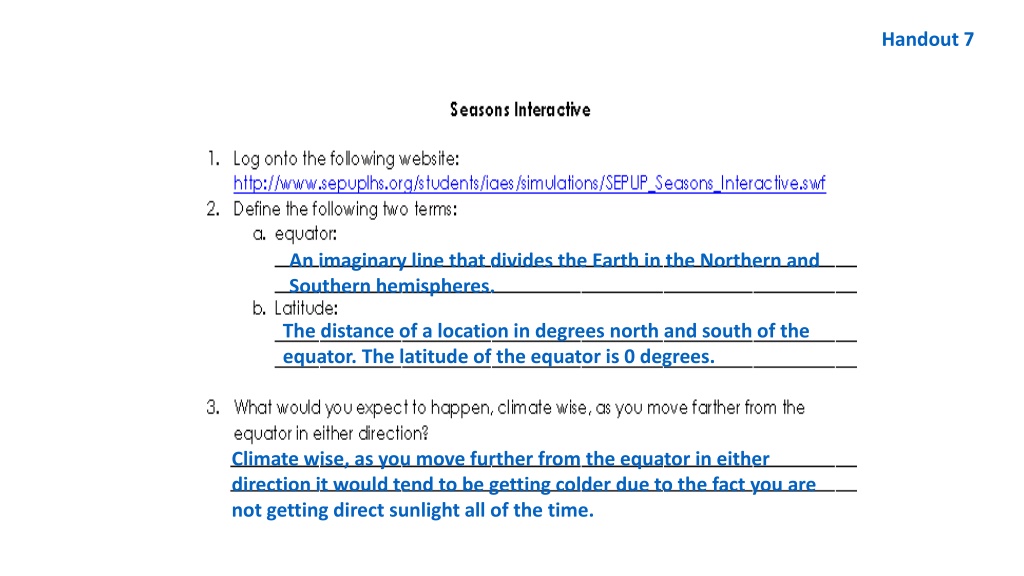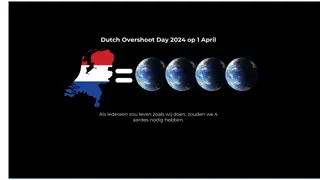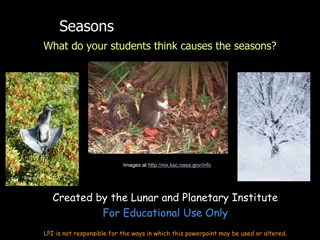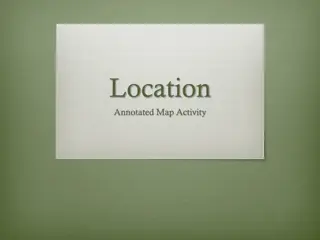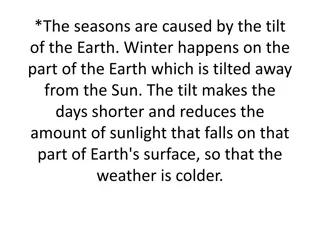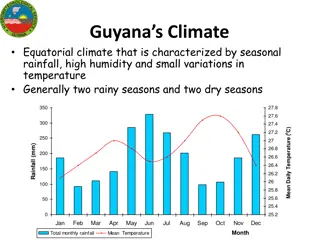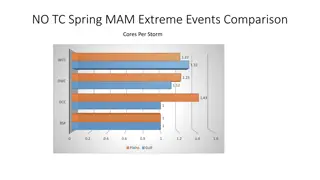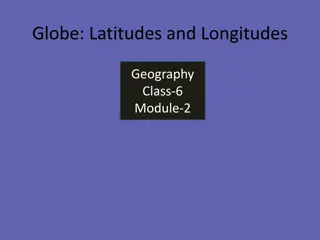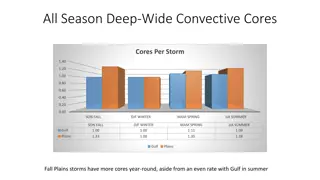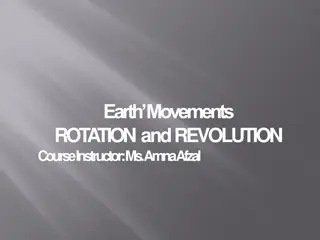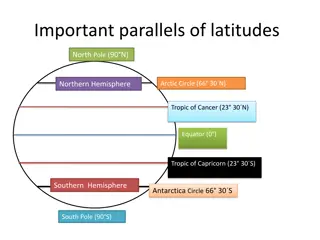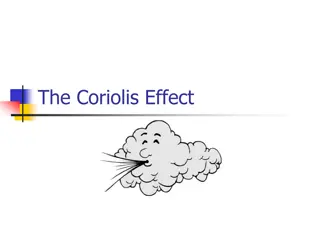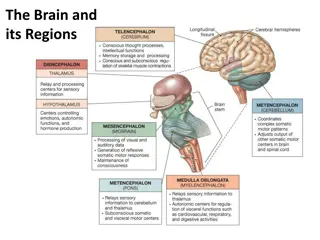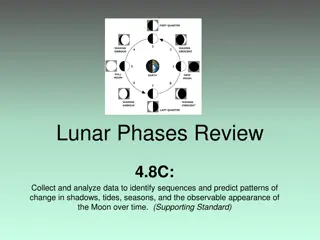Understanding Earth's Hemispheres and Seasons
The Earth is divided into Northern and Southern hemispheres by the equator, affecting climate and seasons based on latitude. Locations near the poles experience significant sunlight changes, while equatorial areas have consistent daylight. Seasons differ between hemispheres due to the Earth's tilt, with different dates marking the beginning of each season.
Uploaded on Sep 25, 2024 | 0 Views
Download Presentation

Please find below an Image/Link to download the presentation.
The content on the website is provided AS IS for your information and personal use only. It may not be sold, licensed, or shared on other websites without obtaining consent from the author. Download presentation by click this link. If you encounter any issues during the download, it is possible that the publisher has removed the file from their server.
E N D
Presentation Transcript
Handout 7 An imaginary line that divides the Earth in the Northern and Southern hemispheres. The distance of a location in degrees north and south of the equator. The latitude of the equator is 0 degrees. Climate wise, as you move further from the equator in either direction it would tend to be getting colder due to the fact you are not getting direct sunlight all of the time.
4 North of the equator, above the Tropic of Cancer Northern Hemisphere North of the equator, above the Tropic of Cancer Northern Hemisphere South of the equator, Southern Hemisphere South of the equator, Below Tropic of Capricorn, Southern Hemisphere
5 27 11:48 37 11:56 58 12:07 64 12:22 55 19:19 69 15:13 58 12:05 50 9:33
48 12:53 65 12:29 58 12:07 52 11:49 16 5:31 27 9:10 58 12:10 63 14:46
6 Anchorage, AK Quito, Ecuador 7 8 The city is close to the North Pole, and therefore experiences the most change due to the tilt and orbit. 9 The city is on the Equator so the amount of sunlight that it gets is not affected by the Earth's tilt. 10 Their temperatures and daylight hours are comparable due to their latitude, but their seasons are reversed. Because of the tilt of the Earth, the Northern Hemisphere and Southern Hemisphere point in different directions and so they are affected differently by the Sun. 11
12 https://www.youtube.com/watch?v=hip6VXZukDo June 21 March 21 Everywhere on Earth gets 12 hours of daylight and 12 hours of darkness. This marks the beginning of Spring. The longest day of the year in the Northern Hemisphere. The Arctic is in the continuous sunlight. This marks the beginning of Summer. September 21 December 21 Everywhere on Earth gets 12 hours of daylight and 12 hours of darkness. This marks the beginning of Autumn, and the nights begin to get longer than the days in the Northern Hemisphere. The longest night of the year in the Northern Hemisphere. This marks the beginning of Winter.
September 21 December 21 June 21 March 21 These are the dates for each season in the Southern hemisphere because the amount of direct and indirect sunlight is opposite that of the Northern hemisphere.
